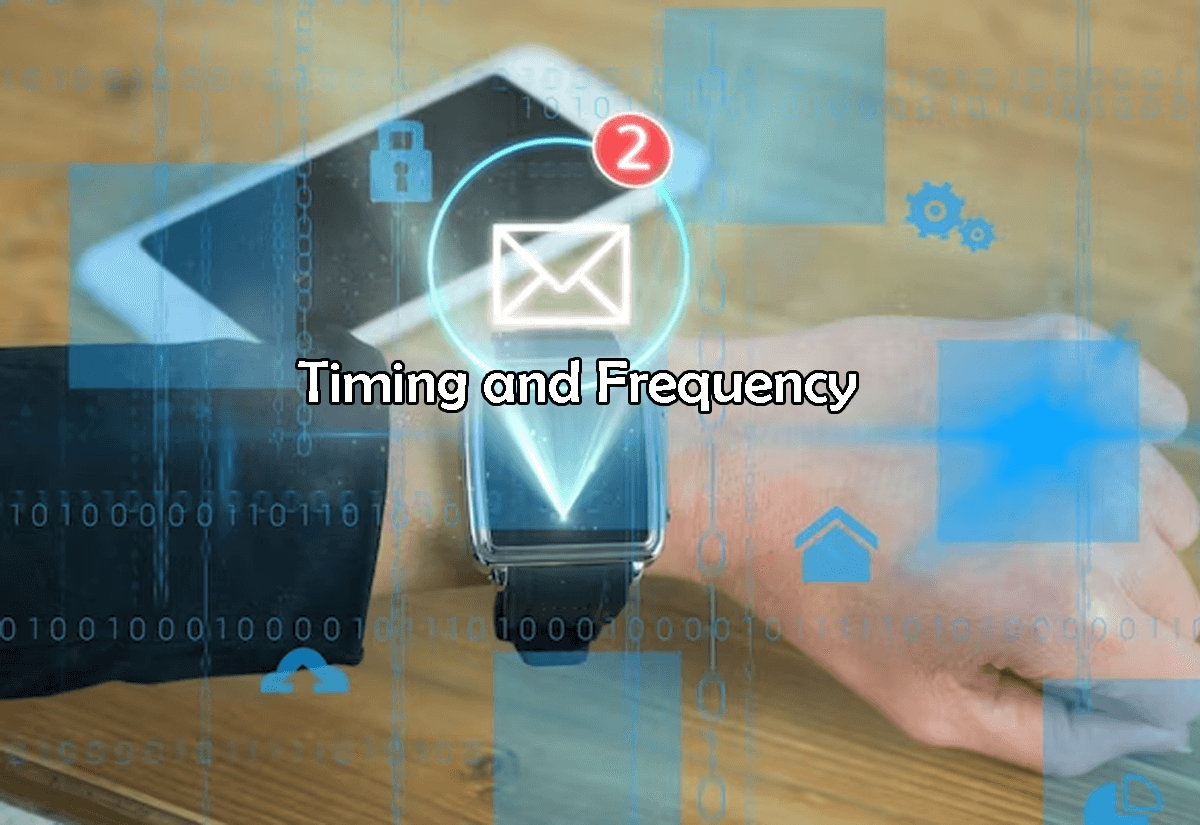What's Inside?
Timing and frequency are critical aspects of email marketing that can significantly impact the success of your campaigns. Understanding when and how often to send emails can improve open rates, click-through rates, and overall engagement with your audience. Here’s a closer look at each factor:
Timing:
- Time of day: Consider the time of day when your target audience is most likely to check their emails. This may vary based on their daily routines, job roles, and time zones. For example, sending B2B emails during regular working hours might be more effective, while B2C emails might see better results in the evenings or weekends.
- Day of the week: Test different days of the week to identify when your subscribers are most responsive. Typically, weekdays tend to be more business-oriented, while weekends might see higher engagement for leisure and retail industries.
- Seasonal relevance: Be mindful of seasonal events, holidays, or industry-specific occasions that can impact the timing and content of your emails. Tailoring your campaigns to align with these events can make them more relevant and timely for your audience.
Frequency:
- Consistency: Establish a consistent email sending schedule to manage subscribers’ expectations. Whether it’s weekly, bi-weekly, or monthly, consistency helps your audience anticipate your emails and reduces the risk of spam complaints or unsubscribes.
- Segmentation: Divide your email list into segments based on demographics, interests, or engagement levels. Different segments may require varying frequencies of emails based on their preferences and engagement history.
- Behavior-based triggers: Implement automated email sequences triggered by specific user actions. For instance, a welcome series when someone signs up, abandoned cart reminders, or re-engagement emails for inactive subscribers. This ensures relevant content is sent at the right time based on user behavior.
- Monitor engagement metrics: Regularly analyze email engagement metrics like open rates, click-through rates, and unsubscribe rates. These insights will help you gauge whether your current frequency is effective or needs adjustment.
It’s important to note that the ideal timing and frequency can vary from one audience to another and from one industry to another. Therefore, A/B testing different schedules and analyzing the results is crucial for finding the optimal approach for your specific email marketing strategy.
Additionally, always prioritize providing value to your subscribers. Avoid bombarding them with excessive emails that could lead to fatigue or irritation. Strive to deliver relevant, personalized content that aligns with their interests and needs, and ensure that your emails are mobile-friendly since many people check their emails on mobile devices.
Timing and frequency best practices
Timing and frequency are important factors to consider when it comes to optimizing engagement and avoiding email fatigue. Here are some best practices for determining the best time and frequency for sending your emails:
-
Know Your Audience:
Understanding your audience is the foundation of successful email marketing. Gather data about your subscribers, such as demographics, interests, and behavior. This information allows you to create relevant and personalized content that resonates with your recipients. By knowing your audience, you can tailor the timing, frequency, and content of your emails to meet their specific needs and preferences.
-
Test and Analyze:
A/B testing (also known as split testing) is a crucial practice in email marketing. Test different elements of your emails, such as subject lines, sender names, call-to-action buttons, and content formats, to determine what performs best with your audience. Analyze the results of these tests to make data-driven decisions and continually improve the effectiveness of your email campaigns.
-
Consider Industry Best Practices:
While knowing your audience is essential, industry best practices can also provide valuable guidance. Research what works well in your industry and incorporate those insights into your email marketing strategy. However, keep in mind that every audience is unique, so always combine industry best practices with your knowledge of your specific subscribers.
-
Avoid Over-Sending:
Bombarding your subscribers with too many emails can lead to email fatigue and increased unsubscribe rates. Maintain a consistent email schedule that aligns with your audience’s preferences and expectations. Strive to provide valuable content in each email to keep subscribers engaged and prevent them from feeling overwhelmed.
-
Segment Your Audience:
Segmenting your email list involves dividing subscribers into groups based on certain criteria, such as demographics, location, past purchase history, engagement level, or interests. By segmenting your audience, you can send more targeted and personalized emails, leading to higher open and click-through rates. It allows you to address the specific needs and interests of each segment, increasing the relevance of your campaigns.
-
Consider Automation:
Email automation can significantly enhance the efficiency and effectiveness of your campaigns. Use automation to send triggered emails based on user actions or specific time intervals. For example, you can set up welcome emails for new subscribers, cart abandonment reminders, or re-engagement emails for inactive subscribers. Automation ensures that your emails are timely, relevant, and personalized, even as your email list grows.
Incorporating these best practices into your email marketing strategy will help you build stronger relationships with your subscribers, improve campaign performance, and drive better results overall. Regularly monitor key performance metrics to gauge the impact of these practices and make continuous improvements to your email marketing efforts.


